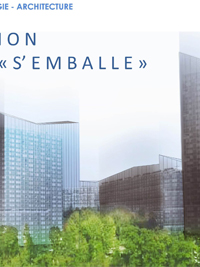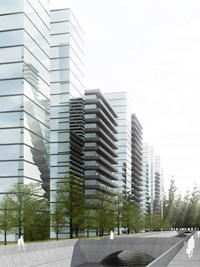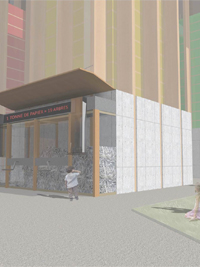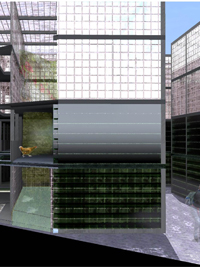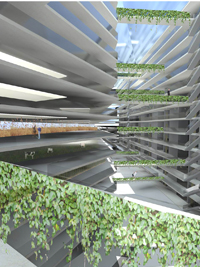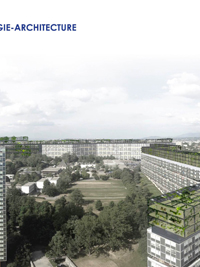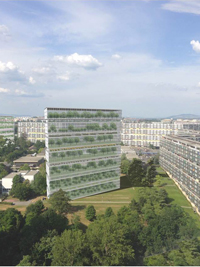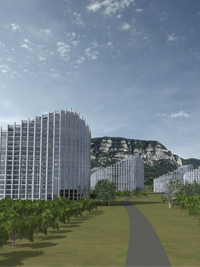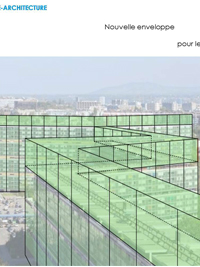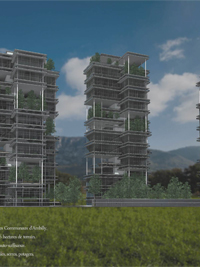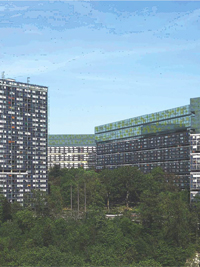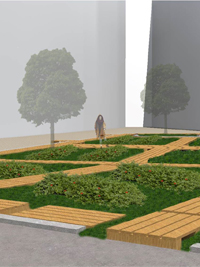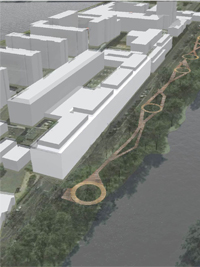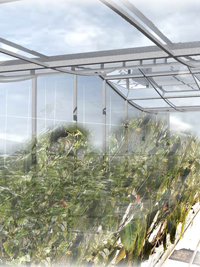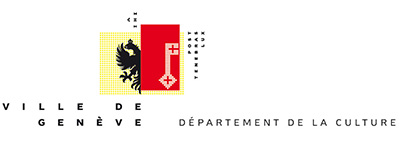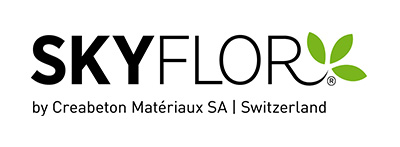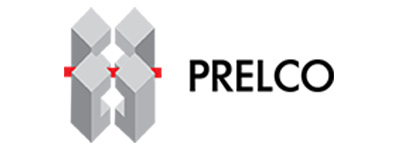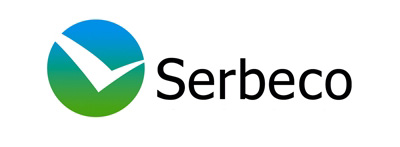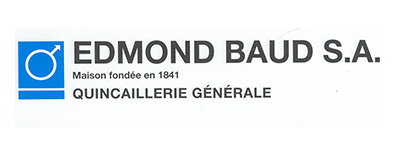hepia Installation and Projects at Swiss Pavilion Expo Milan 2015
17 September 2015 - 31 October 2015
The outdoor installation lessismore on the site of the Swiss Pavilion at Expo Milan 2015 is a project by the students of hepia / Ecole du paysage, d’ingénierie et d’architecture de Genève at the invitation of the City of Geneva. The project was conceived during a Summer School whose aim was to reflect on the core theme of the Universal Exposition Feeding the Planet, Energy for Life, at the same time engaging in a dialogue with the Swiss Pavilion.
Cultural Metabolism
During two-week full-time workshop, 120 students from the Faculty of Architecture worked in groups on five different themes:
- 01/ (timing) metabolism - cultural metabolism, life-sustaining transformations through the appropriation of the Swiss Pavilion wall surfaces and outside space;
- 02/ re-cycling, re-feeding - resources conservation and material flow using recycled materials for the furnishing of the Swiss Pavilion Auditorium;
- 03/ farming Geneva - Geneva Food Self-Sufficiency proposed in utopian and visionary projects;
- 04/ Eden, the city a vegetable garden - the integration of agriculture in urban spaces such as squares, sidewalks and terraces of different Geneva districts;
- 05/ Food-Energy-Architecture - elevating buildings in the city to cultivate local food on the rooftop of buildings such as that of Lignon di Vernier/Geneva.
The selected project for the outdoor installation lessismore, is composed of an horizontal element like the footbridge/ramp of the Swiss Pavillion and of vertical elements like its towers.
The horizontal element consists of a wall-container containing and collecting empty pet bottles. It aims to make the consumers aware that as well as having a responsibility for equal food distribution they also have a responsibility for the environmental impact of food packaging. The more we consume, the less food products remain and the content of the towers will grow smaller. At the same time, the more we consume, the more packaging waste will be produced and the content of the wall-container will grow higher.
The transparent wall-container in makrolon and pet runs along the main façade of the Swiss Pavilion. It is located between the ticket office and the entrance to the exhibition space on the ground floor of the towers. It entertains the visitors while waiting and spurs them to participate in a playful way to the installation. They can dispose of their Pet bottles looking for the empty cells among the hundreds of occupied cells of the cellular structure. The speed by witch the wall-container will be filled will show both the environmental impact of the packaging waste volume and the need for recycling.
The vertical element consists of three green pilasters of aromatic plantsclimbing on the Swiss Pavilion façades up to a height of 9 meters. They symbolise nature that goes on regenerating to nourish us when we have consumed the food it has produced. The pilasters are composed of Skyflor® modular elements whose porous and brilliant white ceramics surface hosts mint, sage and thyme sublimating the different shades of green.
The modular elements are made up of a sturdy thin layer of ultra-high performance fiber reinforced concrete, a mineral substrate layer enabling the plants to grow, and a ceramic layer with a porous surface qwhere vegetation thrives. This system contributes to the improvement of urban microclimates, the absorption and cleansing of fine dust and pollutants from the atmosphere, the filtration and reuse of rainwater and to a new urban landscape aesthetic.
The Skyflor® system is the result of a project by the Haute école du paysage, d’ingénierie et d’architecture (hepia) in collaboration with the company Creabeton Matériaux SA, the ceramist Jacques Kaufmann, the Ecole d’ingénieurs de Changins and the financial support of the Federal Office for the Environment (FOEN).
The 40 student design projects of the Summer School and the numerous pieces from the Geneva Museums collections, which could not be moved to Milan, despite their connection with food, can be discovered virtually in the auditorium of the Swiss Pavilion thanks to an innovative installation. This is a device, , developed by hepia, which makes any flat surface multi-touch with the help of infrared technology These linear interactive walls, scalable from 2 to 25 meters, are highly responsive and extremely accurate. They are compatible with all Windows software and can simultaneously accommodate as many users as desired.
The exhibition Cultural Metabolism by hepia and the City of Geneva is on show from September 17th to September 21st, and again from October 17th to October 23rd 2015. The installation lessismore, is permanently on display outside the Swiss Pavilion towers from the 17th September to 31st October 2015.












